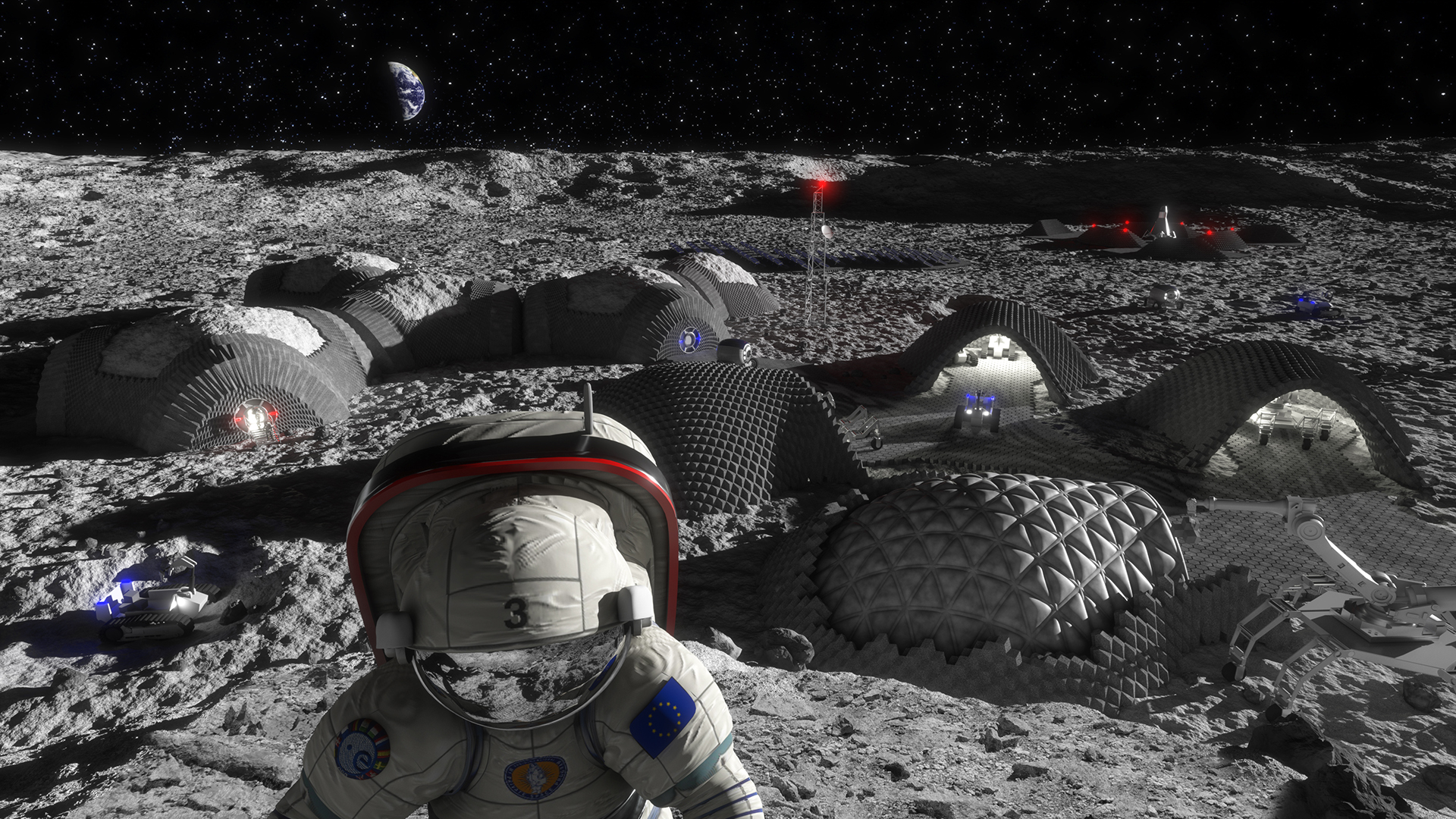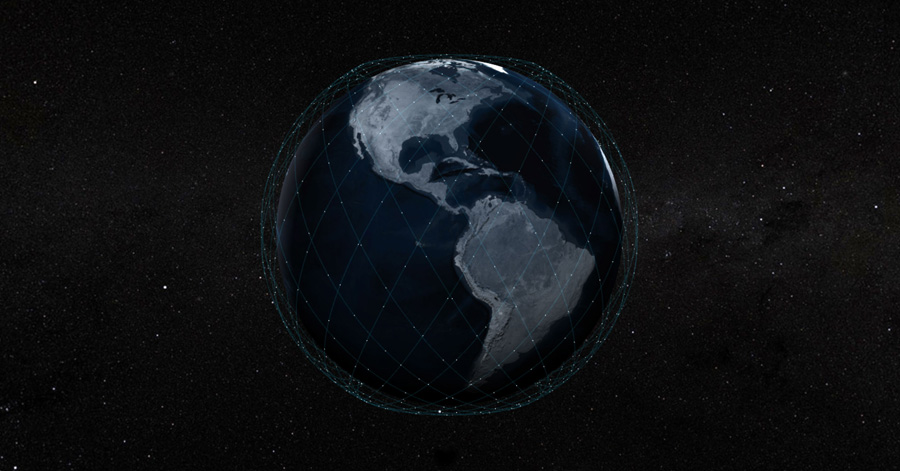
Astronomers have a new cause for concern - NASA and Nokia plans to deploy 4G communications on the moon . In mid-October, the agency announced that under the lunar program, Nokia, a NASA partner, would receive $ 14.1 million for the project.
According to plans, by 2028 the network should be deployed, it will provide communications for lunar landing modules, lunar rovers and all other systems that will arrive on the moon by that time. Everything seems to be fine, the dreams of science fiction writers and ordinary people come true. But astronomers are unhappy - they believe, and not without reason, that the lunar project will have a strong negative impact on radio astronomy.
What's wrong again?
Radio telescopes are extremely sensitive. Visitors who come to the observatory are always asked to turn off their mobile devices. How high is the sensitivity of space radio observation systems? For example, the B. Lovell radio telescope, which is located in the UK, is able to detect a call from Mars. Not a satellite signal, but a regular call on a regular mobile phone.
And it is clear that this sensitivity is not only for this radio telescope, but also for most other systems. Without it, they would not be able to register events on objects that are millions of light years away from us.
In 2015, a story was published on Habréwith the largest radio telescope in Australia, Parkes. About twice a year, the observatory received strange signals from space. Called "perytons", they did not come from a specific area of the firmament, but from everywhere at once. It was so strange that scientists immediately assumed that the signals were of terrestrial origin.
Initially, it was believed that the source of the signal was lightning or some other atmospheric phenomenon. But in the end it turned out that everything is much more prosaic: the "peritones" are emitted by the microwave installed in the back room. Signals appear if the microwave door is opened before the end of its operation.
In general, any artificial signal can spoilastronomers purity of observations or make their work impossible. And now radio astronomy specialists are worried about the NASA and Nokia project. After all, if they can detect a phone call on Mars, then what will the mobile 4G network on the Moon do with radio observations? The answer is obvious - it will complicate the work of scientists.
Interference, they're everywhere

Interference is the main enemy of radio astronomers. The Jodrell Bank Observatory, which houses the B. Lovell Radio Telescope, was the first facility to be built away from sources of radio interference. Scientist Bernard Lovell discovered that telescopes were interfered with by the interference from trams passing near his laboratory. The wires at the point of contact of the tram contacts often spark; when the spark appears, radio signals appear, clogging the radio spectrum.
Since then, it has become mainstream for astronomers to build observatories as far away from civilization as possible. The higher and further the better. The same Square Kilometer Array (SKA) distributed radio telescope is being built in the most remote regions of Australia and South Africa. The reason is the same: no interference from radio devices. It is clear that not only trams are to blame, but the signals of many radio devices jam the air. Microwaves are another misfortune of modern radio astronomy, as mentioned above.
But if you can escape from ground-based sources of radio signals, then you cannot hide from the network of satellites or, even more so, signals from the Moon. Now radio astronomers are developing algorithms for processing the results of observations, which should help reduce the negative impact of interference.
Not long ago, a semi-fantastic plan emerged to build a radio telescope on the far side of the moon. Since it is constantly facing one side of the Earth, the rock mass would protect such a telescope from any influence of the Earth. But now this already difficult plan is under threat: if a source of interference appears on the Moon, there is no point in building a radio telescope there.
There was already a solid scientific basis for the plan. So, with the help of the Queqiao relay satellite, sent to the moon as part of the Chang'e 4 mission, astronomers were able to prove that radio observations from a natural satellite of the Earth are an ideal option for studying space. And even a radio telescope does not need to be taken to the Moon - any crater can be converted into a telescope bowl by deploying a special lining made of wire mesh. After that, you just need to add scientific equipment - and a radio telescope of enormous power and extraordinary "purity" of the radio signal is ready.
The data generated by such a system would help answer fundamental questions about the universe - for example, what it was like in the first few moments after the Big Bang.
Not only 4G
NASA isn't just working with Nokia. In total, 14 different companies are involved in the project to return people to the moon. If everything works out, then the astronauts should return to the Earth's satellite in 4 years. And then the exploration of the Moon will begin, including the laying of communications. The more equipment and people on the moon, the worse for radio astronomers.

Another problem is optical observation. After Elon Musk's Starlink satellites began to enter orbit in dozens, they became visible from Earth with the naked eye. Astronomers immediately stated that if the number of satellites exceeds several hundred, they will interfere with the study of space from Earth using optical telescopes.
If there are about 10,000 satellites, as Musk plans to do in the end, then the work of astronomers will be disrupted. Research into the effect of spacecraft on visual observations is still ongoing, but Musk has promised to make the satellites dark .
In addition, since these are radio communication satellites, they also create interference, and much more powerful than any few transmitters installed on the moon. So strong that the SKA Organization, which is developing a network of next-generation radio telescopes, is now studying the possible impact of all of the above factors on the operation of radio astronomers. It is indicated that after all Starlink satellites are in orbit, the SKA network will become 70% less sensitive.
Well, what's the way out? It is unlikely to exist, space is gradually being developed, and despite the importance of the work of radio astronomers, government agencies and commercial companies will install and launch more and more radio signal sources. So scientists will have to develop methods to reduce the effect of interference on observation results - there seems to be no other way.
